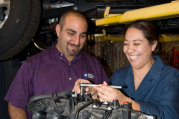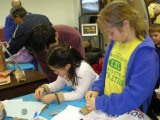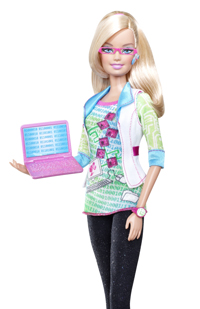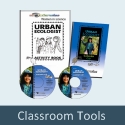New Careers for Mid-Life Women
By the time you read this, I will have turned the big “Five-O” on September 7th.
As I mull over the new and great things I’d like to achieve in my fifties and beyond, I think about women who I look up to who just got going in their later years. Cesária Évora, 70, one of my favorite singers, from Cape Verde, Africa, only launched her international career at age 47. Carmen Lamha, my co-Principal Investigator for the CalWomenTech Project, received her Master’s in Instructional Technology at age 49, and has talked of continuing on to get her PhD at 51.
I also think back to the 50 year-old woman — mother of five and on welfare — who attended a career development course I taught in the early 1980’s. A woman full of life, hope and courage, she decided to become a painter and became the first female to be admitted into the painter’s union apprenticeship program in Washington, DC.
For women, sometimes our greatest career accomplishments come at mid-life — after we’ve married or divorced, raised a family, or perhaps immigrated to the U.S. And sometimes women embark on new careers only after they recognize the difficulty of making ends meet on the salary of the traditionally female jobs they’ve been working in for years.
Older women often turn to community colleges to jumpstart their careers, so it’s important that educators send a message to these students in particular that all careers, including those in technology, are accessible to them.
For example, our Women in Construction Technology banner shows mid-life female role models.
Remember, everything that’s true about women in technology careers is multiplied three-fold for older women in the workplace: the need for help with building block skills, support, and encouragement.
In that vein, American Association of Community Colleges has developed a Plus 50 Initiative that “benchmarks and showcase the most current and innovative programs at community colleges to engage the 50+ learner”. The website offers educators a variety of resources, including publications, webinars, practical tips, and more.
If you have any of your own resources or tips to share on mid-life women and technology careers, please feel free to post them here. And for a humorous take on the challenges of a woman returning to the workforce after 30 years, this video is definitely worth a look.





 Recently, I became acquainted with “Appreciative Inquiry” — a positive change theory from the field of Organizational Development. In a nutshell, this theory suggests that an organization that inquires into problems will continue to discover more of the same, while an organization that strives to appreciate what is best in itself (and others) will discover more and more of what is good.
Recently, I became acquainted with “Appreciative Inquiry” — a positive change theory from the field of Organizational Development. In a nutshell, this theory suggests that an organization that inquires into problems will continue to discover more of the same, while an organization that strives to appreciate what is best in itself (and others) will discover more and more of what is good. One of our
One of our 







Recent Comments